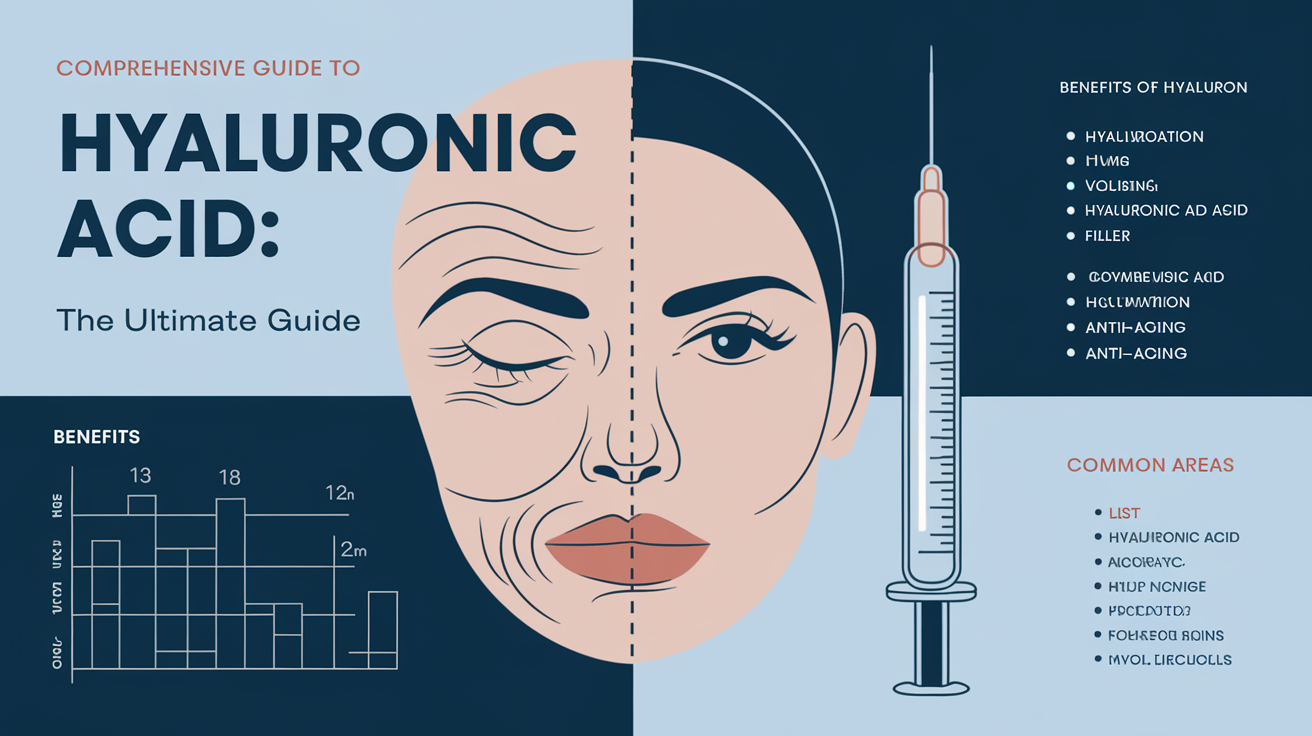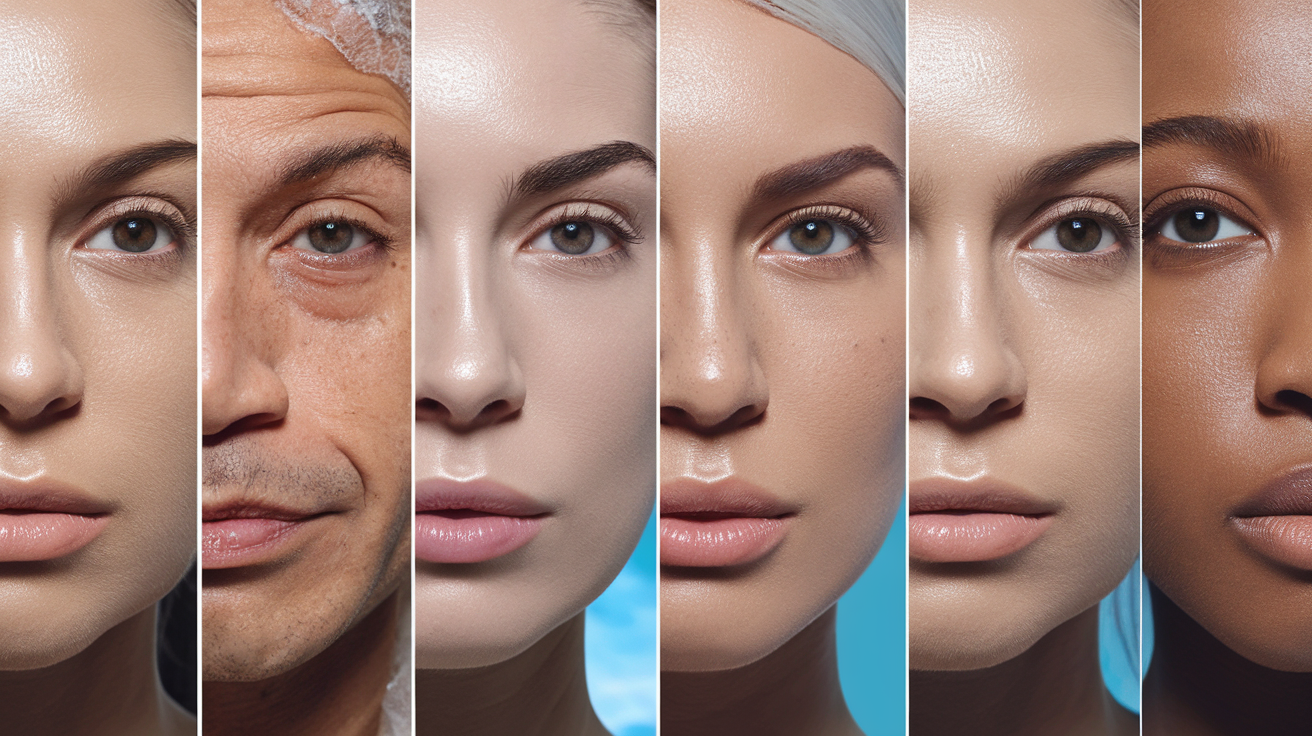Hyaluronic Acid (HA) has become a superstar in the skincare industry, known for its hydrating and anti-aging properties. But with different percentages, formulations, and considerations based on age, gender, and climate, understanding how to use it effectively is essential. In this article, we’ll explore what hyaluronic acid is, how it works, the best way to use it, and key factors to consider before adding it to your skincare routine.
What is Hyaluronic Acid?
Hyaluronic acid is a naturally occurring substance in the human body, primarily found in the skin, connective tissues, and eyes. Its main function is to retain moisture, keeping tissues well-lubricated and hydrated. Because of its ability to hold up to 1,000 times its weight in water, it plays a crucial role in maintaining skin elasticity, plumpness, and smoothness.
Despite being called an “acid,” HA is not an exfoliant like glycolic or salicylic acid. Instead, it acts as a humectant, drawing moisture from the environment and deeper layers of the skin to provide hydration.
Key Benefits of Hyaluronic Acid
- Deeply hydrates the skin by attracting moisture.
- Improves skin elasticity, reducing fine lines and wrinkles.
- Boosts wound healing by promoting tissue repair.
- Soothes inflammation, making it great for sensitive skin.
- Strengthens the skin barrier, protecting against environmental damage.
Key Considerations Before Using Hyaluronic Acid
While hyaluronic acid is generally safe and well-tolerated, certain factors can impact its effectiveness. Here’s what you need to consider before incorporating it into your routine.
1. Skin Type and Sensitivity
Hyaluronic acid works well for all skin types, but its formulation matters:
- Dry Skin: Look for HA combined with occlusive agents (e.g., ceramides, glycerin) to lock in moisture.
- Oily Skin: Lightweight or oil-free formulas prevent greasiness.
- Sensitive Skin: Opt for pure hyaluronic acid without added fragrance or alcohol to avoid irritation.
2. Strength and Percentage Differences
Hyaluronic acid comes in various molecular weights, affecting how deeply it penetrates the skin. Here’s a breakdown of different strengths and their effects:
| Hyaluronic Acid Percentage | Best For | Effects & Considerations |
|---|---|---|
| 0.2% – 1% | Daily hydration | Mild hydration, suitable for all skin types. |
| 1% – 2% | Intense hydration | Plumper skin, reduces fine lines, good for dry skin. |
| 2% – 3% | Anti-aging, deep hydration | Strongest hydration level, may feel sticky or heavy. |
Higher percentages are not necessarily better. Overuse can lead to dehydration, as HA may pull moisture from deeper skin layers if not sealed with a moisturizer.
3. Age and Gender Considerations
- Teenagers (Below 20): Not essential, but a lightweight HA serum can help maintain hydration.
- Adults (20-40): Best time to incorporate HA to prevent early signs of aging and maintain moisture balance.
- Mature Skin (40+): Higher molecular weight HA formulas are recommended to combat wrinkles and loss of elasticity.
- Men vs. Women: HA works the same for both genders, but men may prefer gel-based formulas that absorb quickly without a sticky feel.
4. Regional and Climate Impact
Your environment affects how hyaluronic acid works:
- Hot & Humid Climates: HA absorbs moisture from the air, making it very effective.
- Cold & Dry Climates: Without enough humidity, HA may pull moisture from the skin instead of the air, leading to dryness—always pair it with a moisturizer.
- Polluted Cities: HA helps strengthen the skin barrier, protecting against environmental stressors.
Best Ways to Use Hyaluronic Acid for Maximum Effectiveness
Using HA correctly enhances its benefits and prevents potential drawbacks. Follow these steps for the best results:
1. Apply on Damp Skin
Hyaluronic acid works best when applied to damp skin because it draws moisture from its surroundings. Applying it to dry skin may cause dehydration.
2. Use the Right Amount
- A pea-sized amount is sufficient for the entire face.
- More product does not mean better hydration—excess HA may cause a sticky feeling.
3. Layer It Correctly
HA should be applied before heavier creams and oils for maximum absorption. The ideal routine:
- Cleanser → 2. Toner (optional) → 3. Hyaluronic Acid Serum → 4. Moisturizer → 5. Sunscreen (AM only)
4. Pair with a Moisturizer
Since HA attracts moisture, locking it in with a moisturizer prevents water loss and keeps the skin hydrated. Look for ingredients like ceramides, glycerin, and squalane to seal in hydration.
5. Avoid Mixing with Certain Ingredients
| Do Not Mix With | Why? |
|---|---|
| Alcohol-based Toners | Can counteract HA’s hydrating effects. |
| Strong Acids (AHAs/BHAs) | May alter HA’s pH, reducing effectiveness. |
| Retinol (Without Moisturizer) | Can lead to excessive dryness and irritation. |
If using retinol, apply HA before retinol to hydrate the skin and reduce irritation.
Checking Ingredients: Chemical Considerations
Before purchasing a hyaluronic acid product, check for these key ingredients:
Best Supporting Ingredients
- Sodium Hyaluronate: A smaller molecule than HA, allowing deeper penetration.
- Vitamin B5 (Panthenol): Enhances hydration and reduces irritation.
- Glycerin: Works with HA to lock in moisture.
- Ceramides: Strengthens the skin barrier, preventing moisture loss.
Ingredients to Avoid
- Fragrances & Essential Oils: Can cause irritation, especially for sensitive skin.
- Denatured Alcohol: May dry out the skin, counteracting HA’s benefits.
- Silicones: Can create a film on the skin, reducing HA absorption.
Hyaluronic Acid for Kids: Is It Safe?
Hyaluronic acid is generally safe for children, but it is not necessary unless prescribed for specific skin conditions like eczema. Since children’s skin naturally retains moisture well, HA is rarely needed before puberty.
Conclusion
Hyaluronic acid is one of the most effective and versatile skincare ingredients for hydration, anti-aging, and overall skin health. By choosing the right concentration, applying it correctly, and pairing it with complementary ingredients, you can maximize its benefits and maintain a plump, youthful complexion.
Whether you’re in your 20s looking for prevention, in your 40s targeting fine lines, or simply seeking a hydration boost, HA is a must-have in your skincare routine. Just remember—always apply it to damp skin and seal it with a moisturizer for the best results!
Frequently Asked Questions (FAQs)
1. Can I use hyaluronic acid every day?
Yes, HA is safe for daily use, even twice a day (morning and night).
2. Does hyaluronic acid cause breakouts?
No, HA is non-comedogenic and does not clog pores. However, some formulations may contain irritants that trigger breakouts.
3. Can I use hyaluronic acid with Vitamin C?
Yes! HA and Vitamin C work well together—apply HA first, then Vitamin C for maximum benefits.
4. Is hyaluronic acid good for acne-prone skin?
Yes, it hydrates the skin without making it oily, reducing excess sebum production that can lead to breakouts.
5. Can I use hyaluronic acid under makeup?
Absolutely! HA provides a smooth, hydrated base that enhances makeup application and prevents cakiness.


